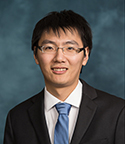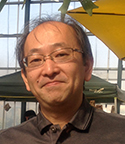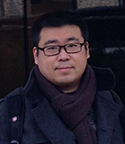Recognizing featured Plant Cell first authors, July 2016
Recently, we’ve been profiling first authors of Plant Cell papers that are selected for In Brief summaries. Here are the first-author profiles from the July issue of The Plant Cell.
Fangwei Gu, featured first author of Arabidopsis CSLD5 functions in cell plate formation in a cell cycle-dependent manner
Current Position: Communication Specialist at WuXi AppTec.
Education: PhD: Molecular, Cellular, and Developmental Biology, University of Michigan, Ann Arbor.
Non-scientific Interests: Writing, reading, soccer, photography, and Japanese culture.
When I was a little boy, I once visited my aunt and found a bristle grass growing outside her house. I was so fascinated by its shape and determined to grow it on my balcony. The only question was the seeds: I was five or six then and had no clue whether the grain-like structures were actually its seeds. But I am glad that I grew them anyway, and successfully germinated more bristle grasses. My interest in plant development was then established. Less than two decades after that, I joined Erik Nielsen’s lab at U of M and continued pursuing my career in plant biology. In Erik’s lab, my role was to understand the function of CSLD proteins in Arabidopsis. I was fortunate to observe the localization of CSLD5 on the cell plate and was strongly attracted by its unique dynamics during cell division. Based on the observation, we asked “how unique CSLD5 could be”. With the help of my colleagues and collaborators, we conducted more experiments to compare CSLD5 dynamics with that of other well-known cell cycle proteins or cell plate localized proteins, as described in this paper. The exciting results demonstrated the beauty of precise regulation during cell division.
Hiroshi Takano, featured first author of Moss Chloroplasts are Surrounded by a Peptidoglycan Wall Containing D-Amino Acids
Current Position: Professor, Kumamoto University, Japan.
Education: Ph.D. in Botany (1993), University of Tokyo, Japan.
Non-scientific Interests: Reading, watching sports and movies, appreciating pictures, playing with my dog.
I like cell organelles with double membranes and DNAs. After graduation from Sophia University, Tokyo, Japan, I began my graduate research in the laboratory of Prof. Tsuneyoshi Kuroiwa at the University of Tokyo. In that lab, I met the true slime mold, Physarum polycephalum. During my graduate studies and time as a Research Associate in the same lab, I found the mitochondrial fusion-promoting plasmid mF in specific strains of P. polycephalum. While mitochondrial plasmids other than mF cannot be inherited from male parents, mF can transmit to progeny against a pressure of uniparental inheritance via a mitochondrial fusion event that is caused by mF itself (Takano et al. J. Plant Res. (2010) 123: 131-138). In 1999, I moved to Kumamoto University. In Kumamoto, I encountered bryophytes and started to work on plastid divisions. In 2006, we published the paper working on peptidoglycan biosynthesis genes relating to moss plastid division. Ten years later, I am happy to report the existence of a peptidoglycan wall in moss plastids. I am confident in our results, but even for me, that finding is incredible. I am happy to continue making progress investigating the evolution of plant organelles.
Yueyang Liang, featured first author of SMAX1-LIKE7 signals from the nucleus to regulate shoot development in Arabidopsis via partially EAR motif-independent mechanisms
Current Position: Graduate student at the Rice Research Institute, Sichuan Agricultural University.
Education: M.S. (2007-2010) and Ph.D. (2010-2016) at the Rice Research Institute, Sichuan Agricultural University. Visiting Ph.D. scholar (2013-2016) at The Sainsbury Laboratory, University of Cambridge.
Non-scientific Interests: Reading, cooking, and singing.
During my M.S. studies, I characterized a strigolactone (SL) signaling-associated mutant in rice showing high tillering and a dwarf phenotype. Since then, I have been quite fascinated to know how plants make developmental decisions by perceiving and responding to SL signaling. At the beginning of my Ph.D. research, I worked with Prof. Ping Li at the Rice Research Institute of Sichuan Agricultural University, analyzing SL signaling components in rice. To obtain further insight into the mechanism of SL signaling, I was very fortunate to join Prof. Ottoline Leyser’s Lab in Cambridge as a visiting Ph.D. student, where I focused on identifying the proteolytic targets of SL signaling in Arabidopsis. The work presented in this paper details the function of SMAX-LIKE7 (SMXL7) and its role in the developmental response to the plant hormone SL. We tested the functionality of conserved domains in the SMXL7 protein and demonstrated that tissues in the shoot are broadly sensitive to SMXL7 activity. I hope the key findings of this project contribute to our understanding of SL signaling.




Leave a Reply
Want to join the discussion?Feel free to contribute!